The time signature 3/8 is a well known meter in classical music, but is also used in popular music too. 3/8 contains measures (or bars) that have 3 eighth-note (quaver) beats. Music in 3/8 time often has a lively, upbeat feel. It is used in dance music (such as waltzes and polkas), as well as in folk and pop music.
We’re going to dive straight into 3/8 time, but you can find more info on what a time signature is in our complete guide to meters
What is the time signature 3/8?
The time signature 3/8 is shown in the music as a 3 above an 8.

This comes before the music starts but after the clef and key signature. The ‘3’ stands for 3 beats per measure and the ‘8’ tells us that each beat is an eighth note. This means that the notes in each measure will add up to three eighth notes (quavers).
See if you can spot the three eighth-note beats in this line of music.

Now here it is with the beats labelled.

How to count in 3/8
3/8, like all meters, has a distinctive feel to it. We count 3/8 as 1…2…3….1…2…3 and you can see this on the music below.
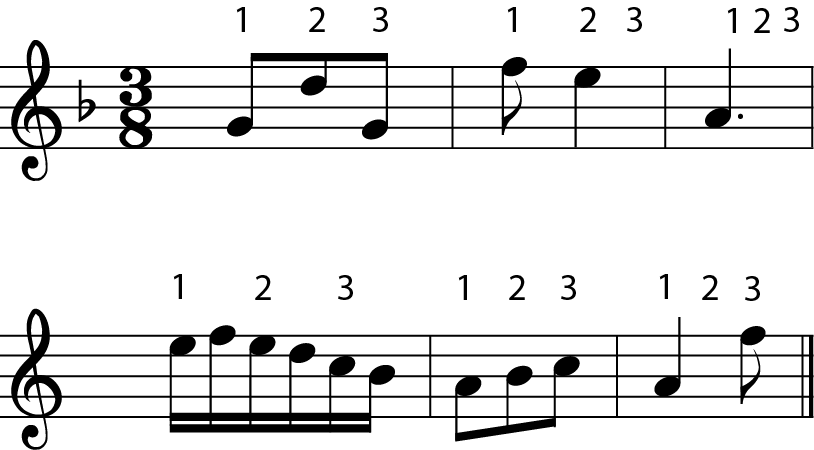
These three eighth-note beats are counted regardless of how those beats are divided up.
Fur Elise by Ludwig van Beethoven is a famous piece with a 3/8 meter/ time signature. It contains more complex rhythms with a variety of note lengths. However, this piece would still counted with three eighth-note beats. Can you spot where each beat falls?
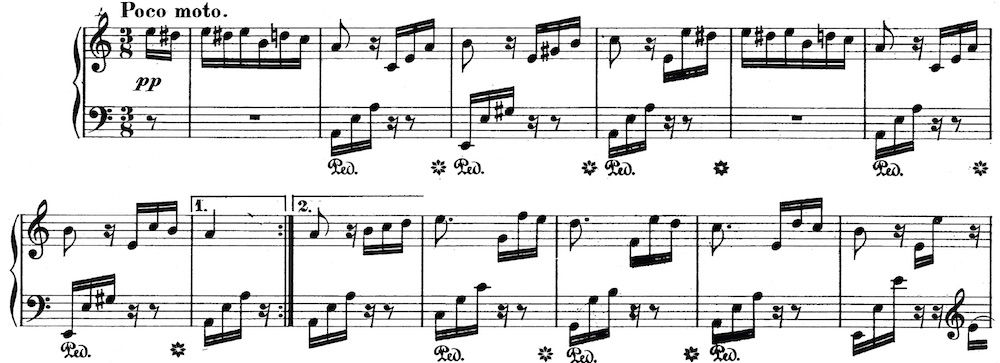
Now here it is with the beats added.
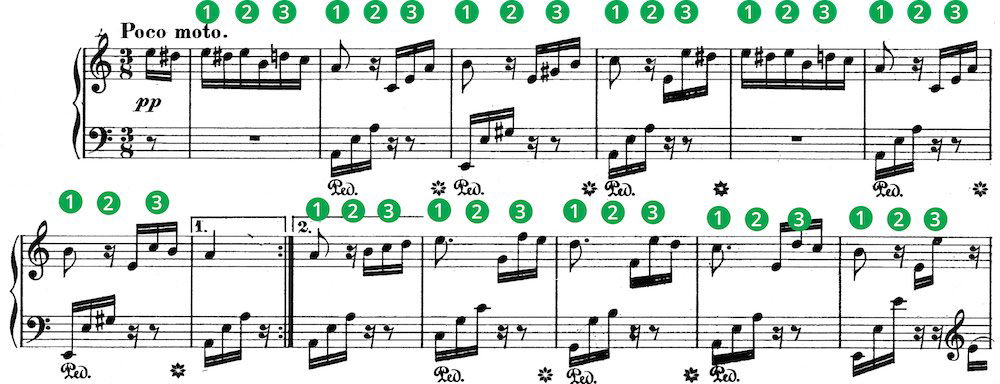
3/8 is a Simple, Triple Time Signature
There are three broad types of time signature: simple, compound and complex (irregular). Simple time signatures have beats that divide into two. Compound time signatures have beats that divide into three and complex time signatures have a mixture of beats.
In 3/8, each beat is an eighth note and therefore can be divided into TWO sixteenth notes. This makes 3/8 a Simple Time Signature. It is a Triple time signature because there are THREE eighth-note beats in each measure. To learn more about the differences check out our ultimate guide to time signatures.
The notes below show how each eighth note beat in 3/8 time can be divided into two sixteenth notes.

Songs with a 3/8 Time Signature
Hedwig’s Theme – John Williams
Brahms – Symphony No. 3 Op. 90 Poco Allegretto
Mozart – Horn Concerto in E-Flat Major
Ear Training and Meters
To develop as a musician you’ll want to be able to recognise time signatures by ear. This is where ear training comes in, as the more you practice, the better your’ll get.
My recommendation for this is Tonegym as they have a comprehensive and fun program for training your ears. It’s what has gotten the best results with for my own students.
They have a great game called ‘Rhythmania’, were you have to read rhythms in different meters and tap them back using the spacebar. I like how Tonegym structure the game so it always gives you the right level of challenge.
For an in-depth look at ear training, here’s my full review of Tonegym.
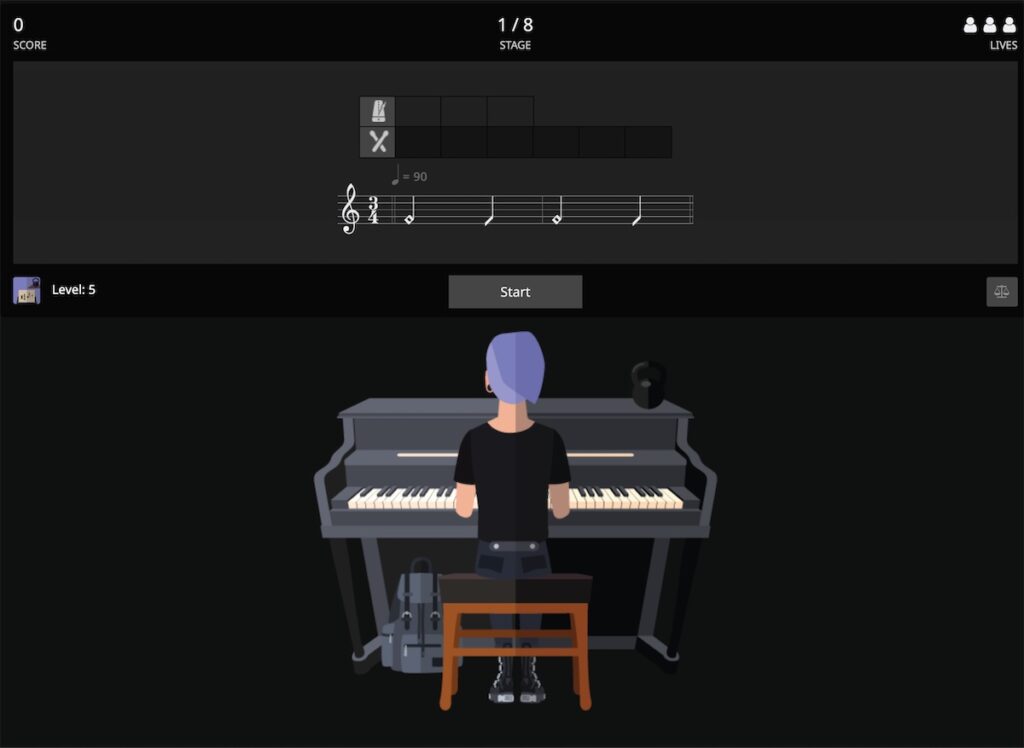
What’s the difference between 3/8 and 3/4?
3/8 is a simple time signature with three beats per measure. 3/4 is also a simple time signature with three beats per measure. So what’s the difference? Well, each beat in 3/8 is an eighth note, whereas each beat in 3/4 is a quarter note (crotchet).
Because of the similarities it would be quite easy to rewrite the same music in either meter. As a rough rule, 3/4 would be used for slower pieces and 3/8 for pieces with a faster tempo. This is not a stead fast rule.
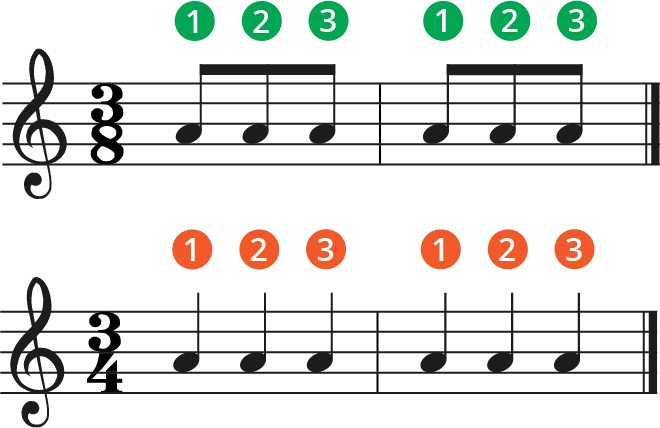
What’s the Difference Between 3/8 and 6/8
You could think of 6/8 time as simply two bars of 3/8. The strong beats would fall in the same places, leading us to ask: is there a difference between them. Well there is and it lies in the feel of each meter. 3/8 has a strong 1…2…3…1…2…3 count with a strong beat at the start of each part. 6/8 has two strong beats as the eighth notes are grouped into threes. However the 2nd strong beat is not quite a prominent as the first beat of each bar. Look at the below image (the strong beats are labelled with a *).
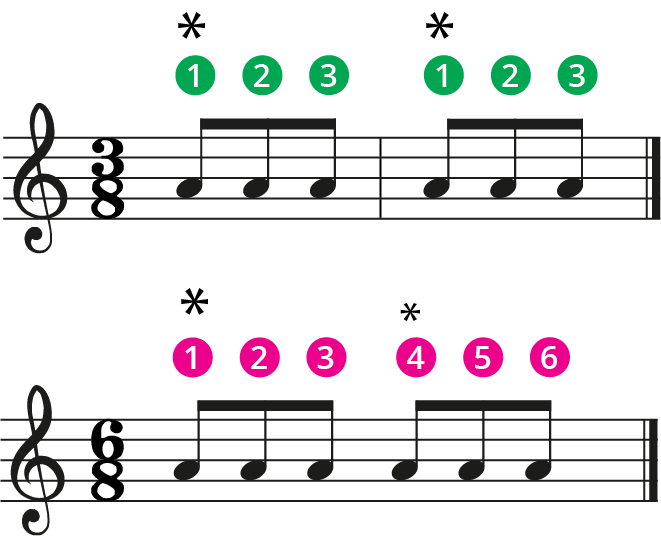
The result is that 6/8 has a pendulum feel to it, whereas 3/8 has a straighter ‘waltz’ count. Similar to 3/4, the time signature 3/8 is also used for waltzes for this reason. To hear the contrast listen to the below piece written by Mozart
What next…?
If you want to learn more about time signatures, check out our complete guide to meters.
